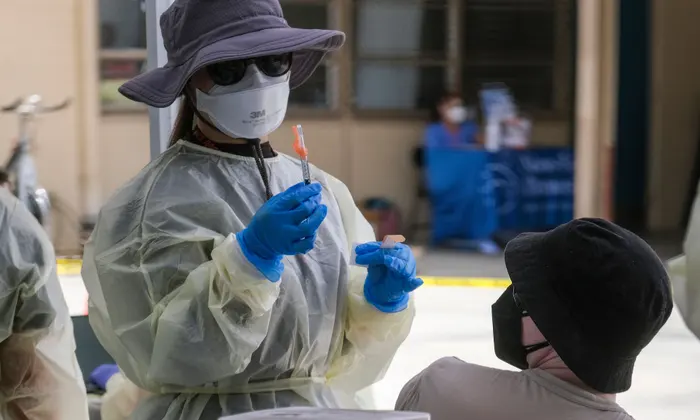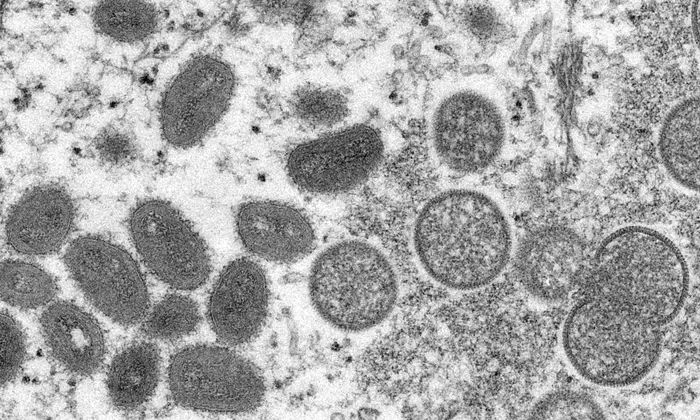2022 Monkeypox Outbreak: All You Need to Know to Avoid Another Pandemic

Just as the COVID pandemic is somewhat coming to an end, the outbreak of another highly contagious virus is spreading worldwide. Especially after a survey by the CDC(Centers for Disease Control and Prevention), over 55,000 people from 100 different countries are confirmed to have Monkeypox, at the time of publishing this article.
Even though the disease has been circulating in various parts of Africa for decades, it appeared outside of Africa last May, in countries like Spain, Portugal, and the UK, leaving the world population and health officials worried and frustrated. And as things turned into a worst-case scenario, the World Health Organization (WHO) announced a public health emergency of international concern on July 23rd, the most important call to action the organization could report.
WHO’s concern and the expected consequences
According to an article published in The Guardian, Dr. Tedros Adhanom Ghebreyesus, WHO’s director general, said at a press conference, “We have an outbreak that has spread around the world rapidly through new modes of transmission about which we understand too little and which meets the criteria in the international health regulations. For all of these reasons, I have decided that the global monkeypox outbreak represents a global health emergency of international concern.”
According to ECDC’s data, as of September 6, 2022, 29 EU/EEA countries had reported 18,844 confirmed cases of monkeypox since the outbreak’s start. 47 cases in total have been documented in Turkey and three Western Balkan nations. Since the outbreak began, Spain (6,749 cases), France (3,645), Germany (3,505), the Netherlands (1,172), and Portugal(789) have reported the most cases.
In July 2022, there were two deaths recorded in Spain, while one death was reported in Belgium in August 2022. Spain, Luxembourg, and Portugal have been reported to have the highest overall reporting rates. These horrifying statistics surrounding the European region show how this specific continent has been most affected, with 33% reported cases and still increasing. Though the risk is higher in European countries than in other parts of the world, all of us should prepare since there is a clear risk of international spread.
Definition and Symptoms to look out for
Monkeypox is a viral infection typically found in animals of central Africa, which can transfer to humans through the infected animals. Animals like monkeys, giant-pouched rats, African dormice, and various species of squirrels have been mostly responsible for the initial spread of the virus. Still, a cloud of uncertainty surrounds the exact reservoirs of the virus and its intensity.
As for the recent widespread outbreak, there are two ways that this virus can be transmitted. Direct contact with the blood, body fluids and cutaneous or mucosal lesions of infected animals can result in animal-to-human (zoonotic) transfer. Whereas infected skin lesions, respiratory secretions, or recently contaminated items can all cause human-to-human transmission when in close proximity.
In other words, close contact with someone who has the disease might be transferred from person-to-person. Close contact can refer to being face-to-face (such as chatting, breathing, or singing close to one another, which might cause droplets or short-range particles); or having a sexual relationship with an afflicted person. Studies are being conducted to better understand the potential processes of monkeypox transmission through the air.
According to the widely researched article by Medical News Today, WHO, among many common symptoms of fever and body aches, the primary symptoms of monkeypox are swollen lymph nodes and an outbreak of blister-like rashes all over the body. The rashes break out 1-3 days after the fever and tend to be more concentrated on the face. Moreover, along with the cornea, oral mucous membranes, genitalia, and conjunctivae are all also impacted in 70% of instances. Other severe symptoms of monkeypox include
- Lymphadenopathy (swelling of the lymph nodes)
- Intense headaches
- Intense asthenia (lack of energy)
- Back pain
- Myalgia (muscle pain)
Compared to other illnesses that may initially seem similar, monkeypox has a specific characteristic called lymphadenopathy (chickenpox, measles, smallpox).
These symptoms usually last for two to four weeks, with the current fatality rate being 3% – 6%. Monkeypox infections caused by the Clade IIb virus, which was found throughout this outbreak, are rarely lethal. Infection with this disease has a survival rate of around 99%. However, those with compromised immune systems, children, individuals who have a history of eczema, pregnant women, and those who are breastfeeding may be more vulnerable to developing life-threatening conditions or passing away.
Safety Measures all of us should follo
Even though the Health Ministry has dismissed the rumours of Monkeypox in our country, it is wise to prepare by knowing how to stay safe during this recent outbreak. The good thing is that the basic guidelines to protect ourselves from monkeypox are similar to Covid19, wearing masks and washing hands frequently. Otherwise, before the mass-vaccination starts to become available, following precautions can go a long way, which include
- Avoid skin-to-skin contact with anyone who has rashes similar to the ones of monkeypox.
- Avoid touching the clothes, bedding, or any other material of someone who is showing symptoms.
- In the African region, maintain a distance from the carrier animals of this virus.
The biggest risk in this matter is faced by the health workers. Standard infection control procedures should be followed by health professionals caring for patients with a monkeypox virus infection, whether it is suspected or proven, or when handling samples from such patients. Caretakers for the patient should, if possible, be those who have already received a smallpox vaccination since smallpox vaccination has been seen to be 85% effective when it comes to monkeypox cases, according to WHO.
And for the zoonotic kind of spread of this virus, unprotected contact with wild animals must be avoided, especially when they are sick or dead, as well as with their meat, blood, and other components. Additionally, before consumption, all items containing animal meat or parts must be fully cooked.
FAQ (Frequently Asked Questions) about Monkeypox:
- When did the monkeypox outbreak start in 2022?
Tedros Adhanom Ghebreyesus, the head of the World Health Organization (WHO), declared the epidemic a public health emergency of global importance on July 23. (PHEIC). Over 105 nations had reported a total of 57,669 patients diagnosed as of September 11.
How long does it take to get rid of monkeypox?
Although monkeypox can be fatal, most patients fully recover. Monkeypox typically goes away on its own after two to four weeks without any special care.
What happens if you get monkeypox?
a rash which can resemble pimples or blisters and develop on the face, inside the mouth, as well as other body areas such as the hands, feet, chest, genitals, or anus. Before fully healing, the rash passes through several stages. The disease usually lasts two to four weeks.
How do you avoid getting monkeypox?
Avoid coming into contact with materials and items that a monkeypox victim has used. Sharing cups or eating utensils with someone who has monkeypox is not advised. Never handle or touch a person who has monkeypox’s bedding, towels, or clothing.
Is monkeypox like chickenpox?
The biggest clinical diagnostic challenge in the absence of smallpox is separating human monkeypox from chickenpox. The three most significant clinical indicators that support an accurate diagnosis of monkeypox are lymphadenopathy, pre-eruptive fever, and delayed maturation of skin lesions.
What does monkeypox rash look like?
The top physician in Chicago stated that the rashes “can look like a blister, like a pimple, and can be very painful.” According to the Illinois Department of Public Health, “These sores can look like pimples and may be painful or itchy. They can be inside the body, including the mouth, anus, or vagina.”
Does monkeypox look like mosquito bites?
The monkeypox rash might appear differently in every individual. According to Dr. Riveria, “it may initially resemble a bug bite and itch like a bug bite.” The rash then takes a distinct course since bug bites typically swell initially before shrinking as they heal.
What are the symptoms of monkeypox?
Swollen lymph nodes, fever, and a rash that initially resembles chickenpox or a sexually transmitted illness if it appears in the genital or anal area are among the symptoms of monkeypox. Global monkeypox cases in 2022 may result in serious illness, but the infection typically goes away on its own.
Follow The Interlude for more!


















